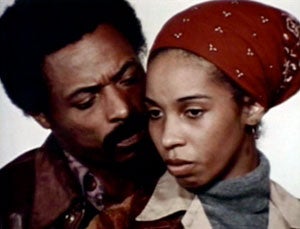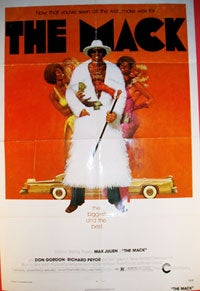The one-day L.A. Rebellion symposium, organized by Jacqueline Stewart and Allyson Nadia Field on November 12, 2011, was a smashing success. In addition to having many out-of-town scholars at the conference, we were privileged to have many L.A. Rebellion filmmakers, including Gay Abel-Bey, Charles Burnett, Ben Caldwell, Larry Clark, Julie Dash, Zeinabu irene Davis, Jamaa Fanaka, Alile Sharon Larkin, Monona Wali and Robert Wheaton.
The morning began with the projection of a silent clip from a recently discovered film by the late UCLA professor Elyseo Taylor, the mentor for many of the Rebellion students. It visualizes the very first Kwanzaa celebration, organized right here in Los Angeles in 1967 by Dr. Maulana Karenga. This unique and priceless sound footage is being preserved at the Archive, having been donated by the filmmaker’s widow.
Next, Clyde Taylor, Professor emeritus from NYU and the man who coined the term "L.A. Rebellion," gave an emotional keynote speech. Prophetically, Taylor had commented in a 1986 article that the Rebellion would not come to fame until after “the turn of the century.” Taylor also noted that the films were still toxic, even today, 40 years after their production, because they touched on many issues that have yet to be resolved. Unemployment, substandard housing and poverty have all gotten much worse since the 1% decided to begin dismantling the social accomplishments of postwar America.

The first panel of the day provided historical context for the Rebellion with David E. James (USC) reminding us that the leftist producers of Salt of the Earth (1954) and California Newsreel were important predecessors, while I discussed the relationship of the Rebellion to the so-called “Blaxploitation” genre. UCLA graduate student Samantha Sheppard theorized female-gendered labor in the L.A. Rebellion films, a realm allowed to affect and be affected by the world around it.

The second panel in the afternoon coalesced around Black art and artists. Danny Widener (UCSD) referenced his book, Black Arts West: Culture and Struggle in Postwar Los Angeles (2010), noting that despite progress in producing art in which African Americans were the subject of their own history, the culture was not only still underdeveloped, but actually repressing its own memory of the past. UCLA musicology graduate student Morgan Woolsey argued that music in the films of the Rebellion, e.g. in Passing Through (1977), reflects the personal liberation of the characters rather than is utilized, as in Hollywood films, to produce a passive and compliant viewer. Finally, UCLA alumnus and independent filmmaker/artist Cauleen Smith presented a fascinating close analysis of the cinematography of Passing Through, arguing that Clark, like other Rebellion filmmakers, was very concerned about finding film stocks that accurately reflected African American skin tones, and indeed used light, dark and liminal spaces to create meanings. She also challenged Clark's representation of women.

The concluding panel discussion called for statements from the onstage participants, before a lively discussion with the audience ensued. While Ed Guerrero (NYU) argued that Blaxploitation and the L.A. Rebellion should be seen as parallel movements having similar agendas but divergent aesthetic means, Chuck Kleinhans (Northwestern emertitus) reminded us that economic realities structure independent filmmaking as well as Hollywood work-for-hire, further complicating any binary distinction between Hollywood and the Rebellion. Michael Martin, who is Director of the Black Film Center at Indiana University and the editor of Black Camera, presented an analysis of Killer of Sheep (1977), Bush Mama (1975) and Illusions (1982), noting that even these student works shared film theoretical and narrative assumptions, allowing them to create images of African Americans previously invisible on any screen. Finally, Monona Wali, an L.A. Rebellion cohort member of Indian ethnicity, presented a personal reflection on the movement, her love affair with the Black Panther Party and her efforts to publicize the L.A. Rebellion through her journalistic work.
The ensuing discussion among all the symposium participants onstage and in the audience covered many issues, but the most interesting interventions circled around Blaxploitation’s relationship to the Rebellion. Larry Clark, for example, stated that while Third World cinema communicated to them what was possible in cinema, Blaxploitation only showed them what was not possible. At the same time, a number of Rebellion figures noted that such Blaxploitation filmmakers as Ivan Dixon, Michael Schulz and Reuben Cannon had been very supportive.
The day ended happily for all with a screening of four L.A. Rebellion films, including Larry Clark’s As Above, So Below (1973), and the late Melvonna Ballenger’s Rain (1978), neither film having been seen for over 30 years, and both acclaimed by the audience as masterpieces. Indeed, during the following discussion, Cauleen Smith, a former student of Larry Clark’s, called the master to task for dismissing his own extremely powerful film.






 Mobile Navigation
Mobile Navigation


Comments